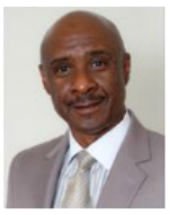
Regardless of the size of the organization, there are key considerations required in reference to the speed and frequency of change when realigning, reorganizing or implementing changes within a newly designed or seasoned technology organization.
Likened to the transmission in an automobile, decisions must be made as to when you shift automatically or for the leader to conduct manual shifts/decisions based on the current state of the department and organization.
There are key soft and hard skills required to ensure the overall success and operational efficiency for the department and the organization. Critical to these decisions are in-depth assessments of the skills, assessment of resources and support of the current staff and senior members.
Two critical components are ownership and buy-in from key players and the support of senior members of the organization. When the expectations and deliverables of internal and external stakeholders are managed it provides for an opportunity for success. This component alone will either hinder or complement your effort.
Hacking the culture
There are three key considerations in every technology department: People, Processes and Technology.
The people will fall into three categories: ambassadors, doubters and naysayers.
- The ambassadors are your prime candidates for implementing change within the organization. They are the ones hungry to enhance the perception, culture and services of the organization. They see the shortcomings and are ready for change.
- The doubters are the ones who are constantly watching and model the state of Missouri’s moto: Show Me! They see an opportunity, but they are doubting whether or not it will actually become a reality. These individuals are prime for quick wins to bring them over to the ambassador pool.
- The naysayers will take a little more work. They require coaching and mentoring in the hopes that you can at least move them into the middle group of Naysayers. Regardless of the group, all are important and each of them at some level] are observing, watching and ready for an opportunity to excel. It becomes the responsibility of the CIO, CTO or CITO to ‘hack’ the culture and make the team and organization a part of a successful technology team.
When hacking the culture, it is critical to understand that, regardless of the group or perception of the organization, technology is useless if the culture of the organization is not focused on services and support and centered on the organization’s strategy.
It is true that perception is reality; however, if you can successfully ‘hack’ the culture and get your strategy in place you will have made a huge step forward in your transition effort. Keeping in mind that people are the ones who drive the organization. They are the ones who implement the strategy of your organization. A key campaign must be developed to encourage the team to forget about the past; but, you must learn from it. Secondly, every organization has a code and you must hack or break that code in order to achieve success.
In-depth assessments
The culture of any technology organization is as critical as the technology itself. To be successful requires true collaboration with your business partners to ensure that the technology department is supporting them in a way that allows for true instructional and business success for students and staff.
Technology is useless if the culture of the organization is not focused on services and support and centered on the organization’s strategy.
The culture of the technology staff must also be assessed, adjusted (shifted) and evaluated to ensure the support needed is being provided. The speed and frequency of these shifts are equally important when realigning, reorganizing or implementing changes within a newly designed or seasoned technology organization. There are both soft and hard skills required to ensure the overall success and operational efficiency of the department and the organization. An assessment is required that focuses on in-depth assessments of those skills, assessments of resources, and support for current staff (including senior staff).
These three foundational questions that must be answered by your technology leadership team and staff:
- Why are we here?
- Who do we serve?
- What services do we provide?
Answering these questions will provide the foundation for building the culture of the organization. The way you build the culture of the organization is critical, and you must massage it very carefully. You have to know IT. You have to know the application environment. You must know the infrastructure environment and the service delivery environment. And if you don’t know how these components fit together and the culture [or feel] of the organization, in my opinion, you will be destined for failure.
Read: Learning and Leading—Making an Impact
The technology framework in most organizations is the same but the methodology that you use to achieve those goals is distinct. Each organization will require a different approach because you have to look at the players on the field. You have to look at the goals of the district. You have to look at the current leader, and the leader has an impact. As a leader, celebrate the wins, learn from the past and empower your ambassadors.
I often use the geese analogy to illustrate the power and heights that can be achieved once everyone is on board and moving in the same direction. The head goose defines the direction. Once it gets a formation of other geese, they begin to gain speed and the elevation has no limits. Not only that but, the encouragement of the other geese provides support and opportunities for others to lead along their journey which allows for less manual efforts and provides the opportunity to realize the benefits of an automatic transmission.
Ken Thompson is chief information technology officer for San Antonio ISD. He will be a featured speaker at DA’s FETC 2020.







